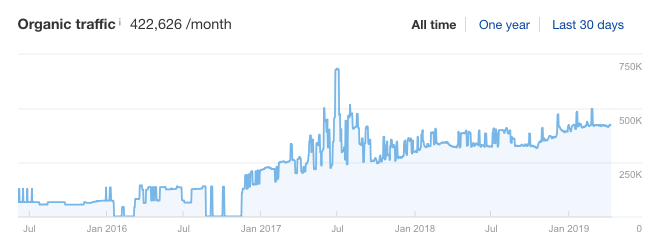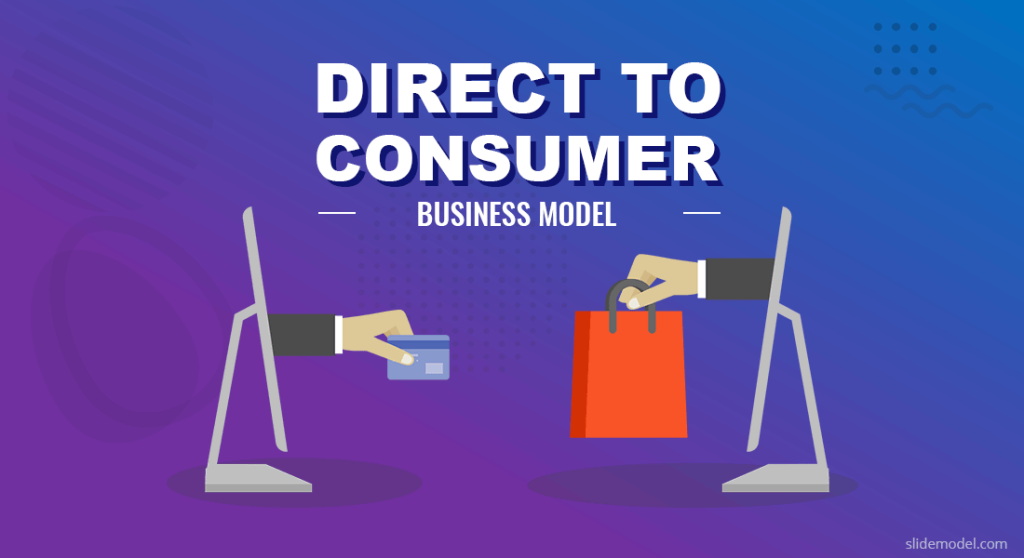B2B, B2C, and D2C Everything may get rather perplexing.
One of them has the ability to soar and catch on with both retail and e-commerce companies.
What makes the direct-to-consumer business model so popular? What makes this company model unique, and why should you care?
Let’s go back in time a little bit.
Before the Internet, running a small retail brand was difficult. If your firm didn’t have eye-catching, colorful labels on grocery shelves, forget about generating any money.
In other words, distributors controlled how commerce was conducted.
Today’s business is different. Since manufacturers are also their own distributors, it is their property.
This has led to the emergence of a new class of businesses: companies that manufacture, package, sell, and transport their goods. None of them shared their margins.
The direct-to-consumer model is based on what you’re going to discover.
- What exactly does D2C mean?
- D2C model’s benefits and drawbacks
- Examples of successful D2C businesses.
Let’s start now.
What exactly does D2C mean?

The phrase “direct-to-consumer” is referred to as D2C. A business both manufactures and distributes a certain product through its own facilities and channels.
These channels might include a social media channel, an online store, and a physical location.
It may be used to practically any sector. A case of D2C in the wine industry is as follows:
Several unique wine varieties are produced by Daou Vineyards & Winery in California. Along with their branded retail store, they also offer them online.
A direct-to-consumer company may use its physical presence to help its customers learn more about the product, as a recent study shown that retail outlets with a particular offer (such taste testing) had a substantial impact on sales.
The direct-to-consumer business model is also successful in the fashion industry.
Hien Le, a designer from Germany, offers his own products online and at a shop in Berlin.
Hien Le focused on the neighborhood. His brand gained notoriety as a well-known fashion icon in the Berlin fashion industry over time.
There is no need to engage with a middleman or wholesaler.
These two instances—Daou Vineyards & Winery and Hien Le—have eliminating the intermediary in common.
The goal is to cut out distributors, manufacturers, and other businesses that stand between a brand and its ultimate consumer. By doing this, the business becomes closer to its intended market.
Many brands suit the D2C definition precisely, despite the fact that the D2C model is less well-known than the B2B or B2C models. Later, more on those.
Let’s concentrate on the advantages and disadvantages of the D2C approach for now.
Direct-to-consumer business models have advantages and disadvantages.
You may be wondering:
Use the intermediary instead of worrying about distribution; isn’t that simpler?
Using a marketplace to distribute your goods may appear simple, but it reduces your revenues. One advantage is that you can keep your own money in your pocket. Additionally:
advantages of using a direct-to-customer business model
The advantages of D2C may vary depending on the specific sector of business you are in. However, the following ideas are constant:
Less intermediaries = greater profits
Accessing more precise client data Increasing the level of personalisation in your product line
increased profitability control
Additional space for product testing
Let’s examine a few more advantages.
Greater margin control

How do brands that sell directly to consumers raise their profits?
Let’s use the direct-to-consumer brand Glossier as an example.
Glossier offers cosmetics free of chemicals and made with premium components. a basic idea. The brand’s claim of “a people-powered beauty ecosystem” supports it.
Glossier is a direct-to-consumer brand that solely does online sales. The company promotes its values, promise, and goods via social media.
What set Glossier apart from other cosmetic companies as few do this?
Glossier doesn’t cut its margins to sustain a complex network of resellers. It invested in building an online platform for selling its products. The presence on social media is then used to leverage this.
A killer Instagram profile is in particular responsible for acquiring new customers.
With almost 2 million followers, the company has a vast audience to market its product and message to.
Additionally, exponential growth may be seen while looking at SEO. Here’s the organic (traffic from Google) growth since mid-2016:
The growing tendency isn’t the result of backlinks from any resellers (since they have none). This growth is a result of great PR and solid work on brand awareness amongst cosmetic bloggers.
The lesson for you:
D2C allows you to have much better control over your marketing and ultimately your profit margins.
Gaining access to more targeted data
The D2C model means controlling all steps of your distribution and production. So, it also includes gathering an enormous amount of data about your customers.
However, there are some serious questions to answer…
How exactly can you gather this information?
What kind of information is relevant?
For starters, you’re able to see the reaction of customers to certain products. Tools like Hotjar help you see which areas of your website generate more interest.
Generating a heatmap of your website will help you notice spaces that need further work.
Real-life observation tools can shed light on the way customers behave in your store.
When selling via a third party’s website, you’re not given access to any of that data.
Social media does give you insights to your audience. This is potent for marketing purposes, like retargeting and email marketing.
Consider other marketing channels like:
- PPC advertising (Google AdWords, Facebook)
- Quora
- Twitter Reddit
These are great channels to push your D2C brand to a targeted audience.
These channels can also give you granular geographical and socio-economic data.
Combining all this data together, you’re able to create a detailed buyer persona.
The lesson for you:
Middlemen collect valuable information about your customer and don’t always share it with you. The D2C model allows you to collect more relevant information that you keep for yourself.
A higher degree of personalization in your product range
This is directly related to having more customer data.
More information about your customers allows you to better adapt your product range.
Take a look at the personalization idea of Warby Parker, a $ 1.75b D2C company that sells glasses and frames.
Instead of pushing customers to the shop, the company has a quiz that helps choose the perfect pair.
Additionally, Warby Parker offers a trial offer that has been quite successful for the business.
You may purchase a customized box of five pairs of eyeglasses to test out at home. Warby Parker demonstrates the effectiveness of an online distributor going above and beyond.
Giving customers the option to customize a product is worth the extra work since it increases sales.
The lesson is this:
Personalize your product as much as you can. Customers value the idea of “trying before you purchase” as well.
increasing your revenue
Eliminating intermediaries is this D2C benefit.
You own complete financial control over a product when you alone make, market, distribute, and promote it.
However, it’s still wise to manage your cash flow carefully because it’s excellent for company. However, D2C ultimately results in more money in your pocket.
The lesson is this:
A direct-to-consumer transaction excludes bill splitting.
Additional space for product testing
You can test new items more often with the direct-to-consumer approach thanks to its customizable range and robust data access.
D2C businesses face challenges
The distributional duty shift is each D2C company’s main obstacle.
You have to work harder to make your brand stand out if there are no significant resellers to promote it. Fulfillment, packing, returns, and warehousing are within your purview.
However, as you are undoubtedly aware, selling online isn’t always simple. Building your web presence is challenging and takes a lot of commitment.
In the D2C sector, success requires intense marketing effort. If you simply have a presence online under your own name, this is much more true for any brand with an internet presence.
Being a D2C brand requires close collaboration between many different business sectors. But to discover how they achieved success, look at the following D2C samples.
Successful D2C brand examples
Here are some D2C company names to watch out for:
Warby Parker
As was already said, this American company revolutionized its own sector. For many years, the market was controlled by businesses like VisionExpress, Boots Opticians, and Specsavers. They merely sold the goods (frames) made by other businesses. Since its founding in 2010, Warby Parker has made it conceivable and genuinely practical to buy glasses online.
It continues to be the benchmark for direct-to-consumer brands today.
Reformation
It’s no secret that the fashion business is one of the most competitive ones. It’s challenging to locate your own place.
Reformation, an American manufacturer of women’s clothing, managed to get out of this jam. They established a brand-new differentiator.
Products from Reformation are manufactured from recycled or organic materials. They are provided in environmentally friendly packaging, not at the expense of modern and stylish apparel.
The outcome is a brand that, as a result of the ideals it represents, has amassed a sizable cult following.
Me Undies
MeUndies’ tagline is “Feel it to believe it.”
MeUndies, a D2C brand, broadens its target market by providing two different buying options. A subscription service and a standard internet store.
MeUndies is a direct-to-consumer brand.
Thanks to the adaptability of the D2C model, it’s a fantastic illustration of exploring new items.
MeUndies may offer its subscribers new designs and choose which of the new pairs should be featured first in the online store depending on customer response.
By eliminating bulky boxes and employing bespoke pouch packaging and jiffy bags for its tiny, lightweight items, the firm reduces the cost of packing.
The double-barreled strategy also expands the chances for marketing.
Nanit
Nanit essentially watches a baby’s sleep pattern so that parents may “do grownup activities.” Whatever that means, it’s obvious that the perk helped Nanit become a popular D2C brand.
The process of marketing a newborn sleep monitoring equipment is not especially simple. Its technological background might make its search inquiries challenging to predict as well.
And good luck trying to sell such merchandise at a larger supermarket.
Direct-to-consumer enterprises and brands include nanit.
Nanit demonstrated that this was a very lucrative market segment that called for a direct-to-consumer strategy. The business developed a high-quality physical product underpinned by cutting-edge technology using million in capital.
The business pledges to train its clients in addition to producing the goods. Nanit succeeds by providing customers with personalized attention and a durable product.
HERS and HIMS
HERS, a sibling company of HIMS, is committed to addressing issues related to women’s health and wellness.
HERS is one of the top D2C brands in the cosmetics market, and HIMS is another great example of package design.
Male issues including baldness, skin rashes, and even erectile dysfunction are the focus of HIMS. Everything is presented simply and with a minimalistic look.
From a direct-to-consumer perspective, HIMS is a prime example of strong branding.
The business makes excellent use of its exquisite designs and cool aesthetic. Additionally, it is human because of its lighthearted attitude toward private and sometimes difficult issues.
As a D2C brand, HIMS seeks to go beyond simply being a product vendor by joining the conversation and really being helpful.
Want to start developing your own unique packaging? Request a price!
Chubbies
Online retailer Chubbies offers shorts for swimming and pants.
Free delivery is offered to Chubbies customers, but the group discount plan is what sets Chubbies apart. You receive a discount if you purchase more than zero worth of the pants.
For parties, “team bonding at work,” or even military organizations (with a special discount for American troops), Chubbies offers their product as a need.
Dollar Shave Club
Simple concepts are frequently the best.
You receive a kit of custom shaving supplies from Dollar Shave Club. As frequently as you request, a razor, cream, and aftershave products will be provided. The business gained instant notoriety.
Purchasing a razor and shaving cream was a simple task that wasn’t an issue, but it was transformed into a multimillion dollar business.
Casper
What store did you last buy a mattress from?
It was presumably purchased from IKEA if you reside in Europe.
Casper, a D2C brand, is your new alternative. The business developed itself as a mattress authority and elevated its product to a status symbol for contemporary comfort.
Away
In the space of one eyeblink, the globe shrunk. Cheap airlines make travel possible for the majority of people. Thanks to newly discovered locations, the tourism industry’s growth is now accelerating.
Away was given the ideal opportunity to succeed as a result of this. Away offers branded luggage and travel accessories. Customers may test out any luggage for 100 days on the company’s terms. Then, each product comes with a lifetime guarantee.
Away may simply increase the amount of personalisation of its offering without having to divide its earnings.
Ritual
Wellness was only one of several trends that helped D2C businesses develop faster. Ritual is evidence of this, having received funding of far over 0 million since its debut in 2014.
Although the business operates as a subscription service, all of its items are self-produced.
The brands mentioned above represent a wide range of D2C ideas. The absence of outside distributors is the factor that unites them.
Most of these companies offer something either personalized (Away, Dollar Shave Club, Ritual) or unusual (Reformation and Warby Parker). The difficulty of not having a network of resellers was solved by them all.
The use of premium branding and packaging can be seen in almost every D2C brand. D2C businesses, like all brands, must be memorable.
What do they do about that?
The secret to branding is in D2C packaging.
The majority of the aforementioned businesses ship their goods in cardboard boxes.
For a D2C brand, cardboard packaging serves as an advantage for various reasons:
- A broad range of printing and packaging choices improve the quality sense of items when they are shipped in branded boxes.
- Cardboard is also light and reduces shipping costs.
Bulk orders are possible, which will cut expenses.
Although each company’s packaging is unique, the following samples should help you understand the concept.
Swedish company Koksbryggeriet manufactures brewing kits. The company employs lightweight Arktika paper packaging (lighter than cardboard). The design’s vibrant hues produce an eye-catching packaging package.
A fantastic illustration of packaging that is an element of brand identification is Koksbryggeriet. And it’s one of the most important aspects of creating a box that sells in the case of direct-to-consumer.
Products from Monday’s Child are sent in mailer boxes to clients directly. The company’s creator designed the packaging in a unique style, and it produces lovely children’s clothing.
The kids may use these boxes as dollhouses when the delivery arrives.
Your brand’s merchandise gains value by upcycling its packaging. Your client receives something free of charge.
Large D2C companies often use packaging in their plans. Both Casper and Dollar Shave Club mail their goods in plain boxes with their logos on them.
Are you able to establish a D2C brand?
A relatively new type of ecommerce business strategy is direct-to-consumer. The numerous instances included in this article provide as evidence that it can be quite successful, nevertheless.
You will undoubtedly have a lot to consider if you’re thinking about going direct-to-consumer. There will be work to accomplish, from developing your own distribution channels to stepping up your social media presence.
However, as Monty Python famously sang, “Always look on the bright side of life,” you should.
Is it time to improve your game if your company concept is already operational?

Leave a comment